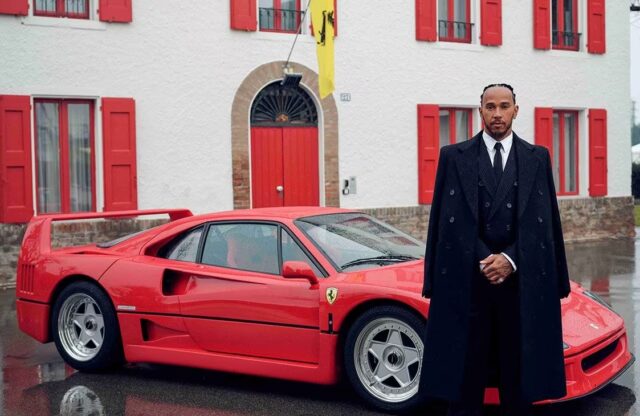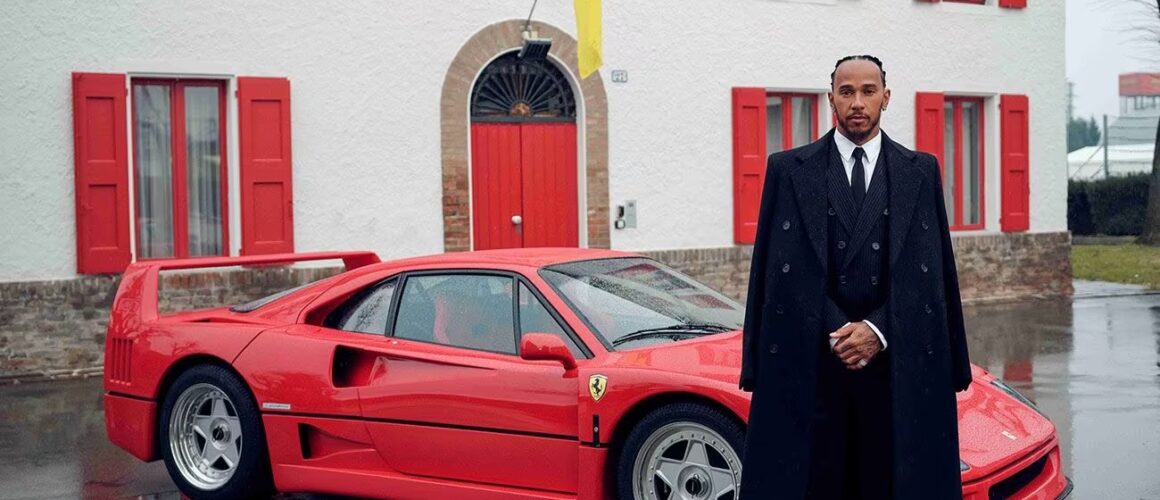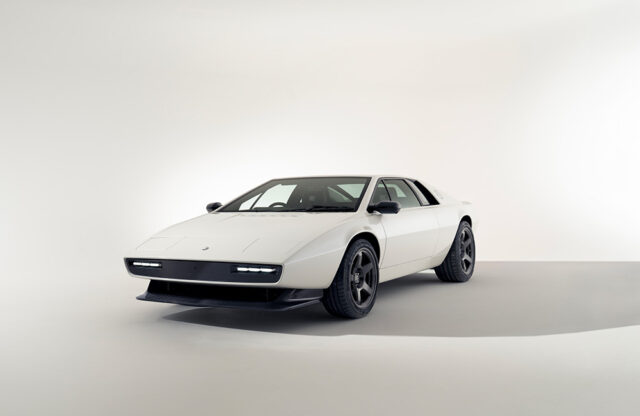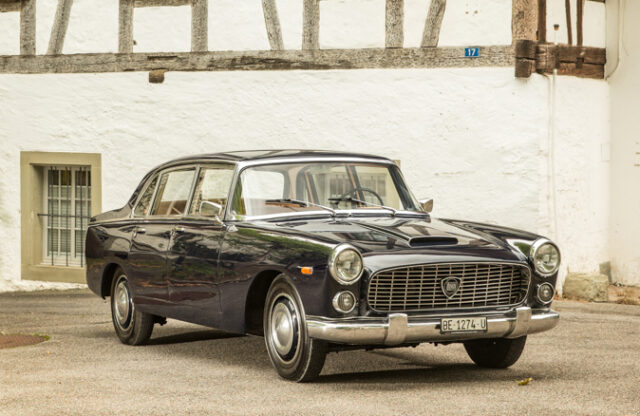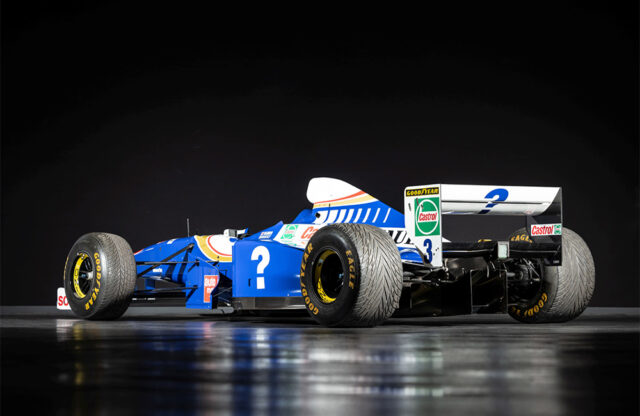Sir Lewis Hamilton is dominating the motor-racing headlines right now, having officially commenced his eagerly anticipated Ferrari career with a test drive in a 2022 car at the legendary Fiorano test track. Until now, Hamilton’s illustrious Formula 1 career has been defined by Mercedes power, beginning with a six-year spell at McLaren-Mercedes, before an unprecedented 11-year run with the Mercedes-AMG Works team. Seeing the British maestro clad in Rosso Corsa will take some getting used to.
This momentous move calls to mind our Top 50 from Magneto issue 16, where we tackled the challenging task of ranking the greatest drivers ever to race for the Scuderia. Should Hamilton claim his record-breaking eighth World Championship and end Ferrari’s 17-year title drought, his name would undoubtedly rank near the very top of that list. But can he succeed where the likes of Alonso and Vettel fell short, restoring Ferrari to the pinnacle of the sport? Only time will tell.
The top ten drivers from issue 16’s Top 50 feature are listed below:
10. Jody Scheckter
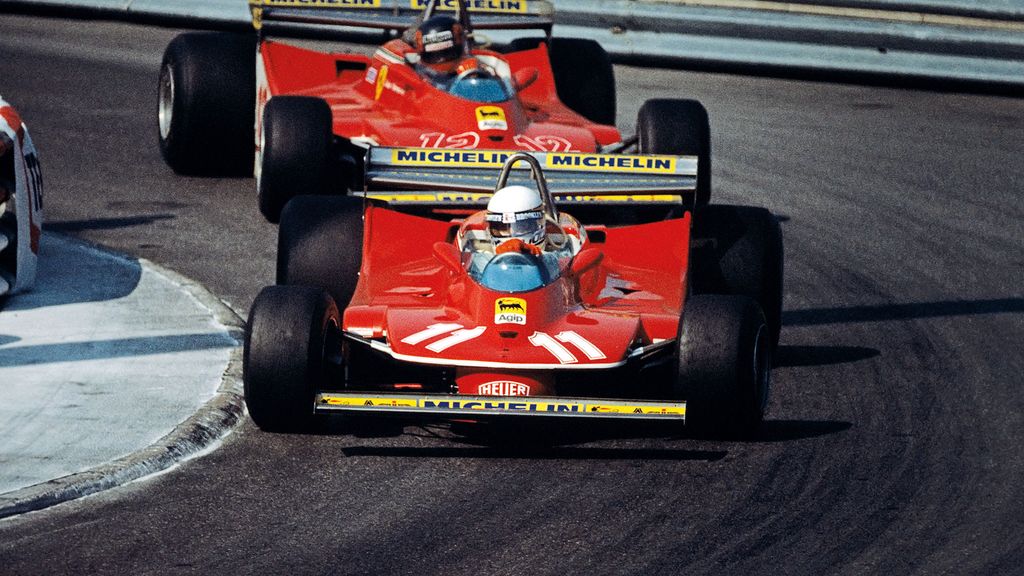
His was a career that was bookended by catastrophes. In between, Scheckter was often toweringly impressive. Joining McLaren for the 1972 season finale at Watkins Glen, the South African drove occasionally a year later in between CanAm commitments. In only his third start in F1, the British GP, he triggered a shunt that wiped out almost half the field. However, during time at Tyrrell and Wolf he channelled his colossal speed and competitive urges, achieving a second place in the 1977 title race to Ferrari’s Niki Lauda. Two years later, he was driving for the Scuderia with Gilles Villeneuve.
Many opined that Scheckter’s ‘frank’ demeanour would be incompatible with the ‘theatrical’ style of team management. Instead, he shone alongside his friend, to the point that they finished first and second in the World Championship (Scheckter on 51 points, the French-Canadian on 47). A year later, the 312 T5 was arguably the worst car Ferrari ever fielded, Scheckter accruing just two points for fifth place at Long Beach. No wonder he hung up his helmet.
9. Fernando Alonso
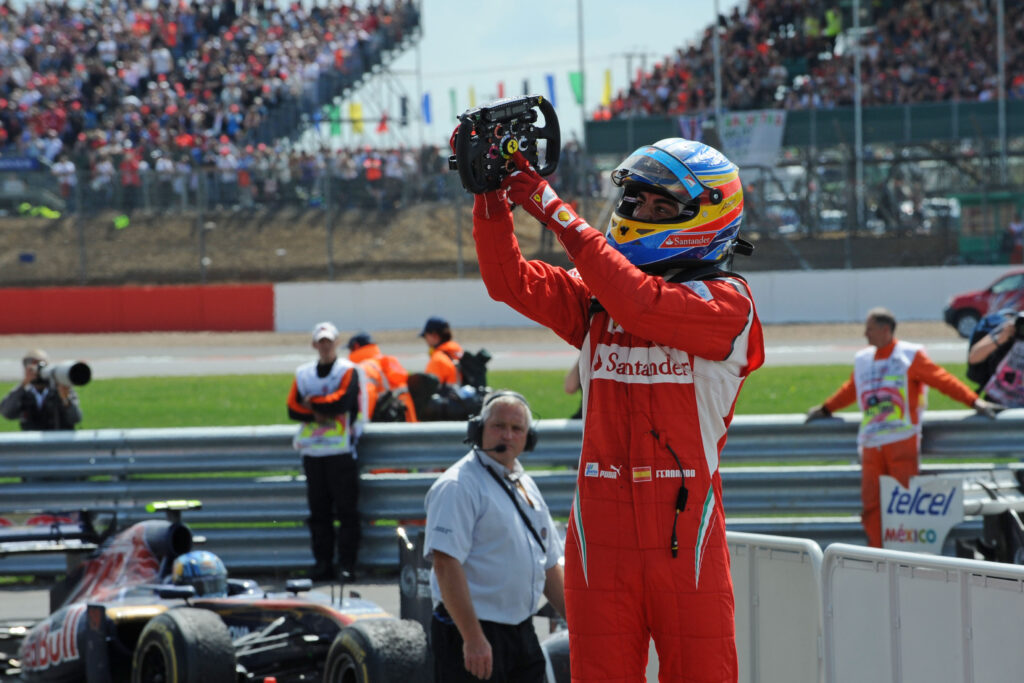
Luca di Montezemolo labelled Alonso one of the “…three best drivers I have ever seen in the Ferrari team”. The other two were Niki Lauda and Michael Schumacher. Even those who disagreed with him couldn’t deny the two-time World Champion was a brilliant driver. He was also not above leaving a trail of devastation in his wake (just ask McLaren), but for a while at least it looked as though Alonso was going to rack up more titles driving for the Scuderia.
Alonso joined Ferrari from Renault, and he outperformed his machinery. He clawed back a 47-point deficit, and then topped the tables after winning in South Korea. However, a fluffed call by the team in the season finale in Abu Dhabi saw him deposited behind Vitaly Petrov’s Renault, which was quicker on the straight. Alonso came home seventh; Red Bull’s Sebastian Vettel won and nabbed the title. Two years later, Alonso lost out again, thanks to rotten luck. He remained to the end of 2014, but his confidence in the team had long since evaporated.
8. John Surtees
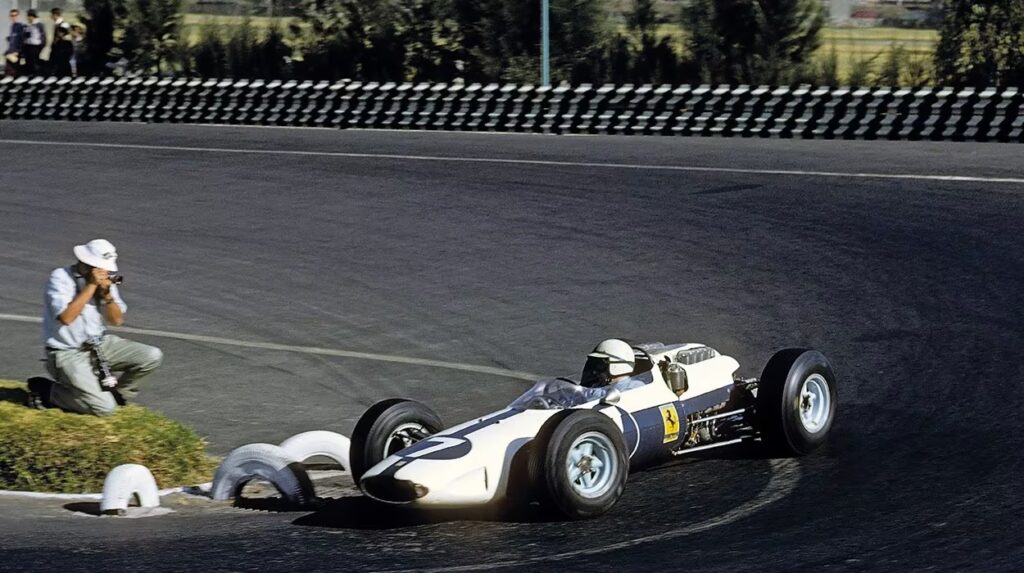
The seven-time motorcycle World Champion joined the Scuderia in 1963, and made an instant impact. Having already conquered the Nürburgring with MV Agusta, ‘Il Grande John’ followed through with victory in the 1000 Kilometres alongside Willy Mairessse in a Ferrari 250 P. Shortly thereafter, he claimed his maiden F1 victory on the Nordschleife, finishing 1min 17.5sec ahead of a misfire-blighted Jim Clark (in Ferrari’s first F1 win since the Italian GP two years prior). He claimed repeat honours in 1964, the year that saw him crowned World Champion.
Surtees was assured of the title – by one point – with only moments to spare. It was an incredible feat, but sadly relations soon soured. He famously left partway through 1966 following one too many disagreements with team boss Eugenio Dragoni. There was a rapprochement with Ferrari, though. In 1970, Surtees returned to drive a 512S in three rounds of the International Championship for Makes. He placed on the podium in each of them.
7. Mike Hawthorn
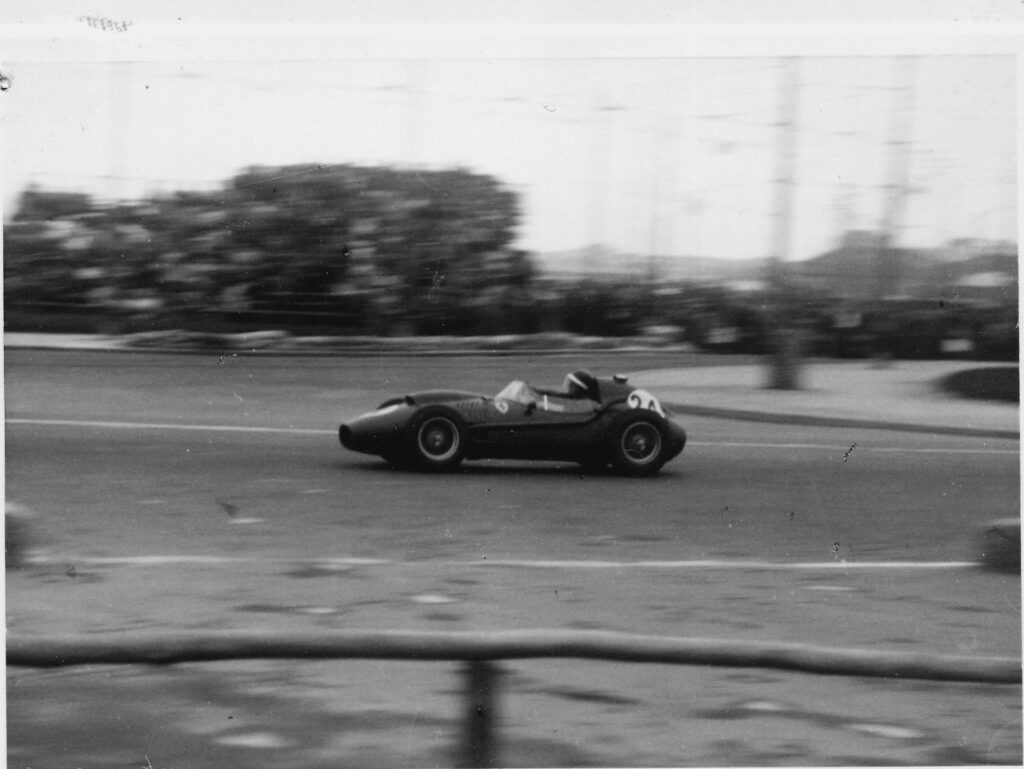
He was motor racing’s blue-eyed boy, the debonair blond whose meteoric rise was mirrored by a precipitous – and tragic – fall. Hawthorn was at the vanguard of a new wave of young British stars who made their mark in GP racing during the 1950s. His title-winning 1958 season was a masterclass in consistency, the Yorkshire-born ace steering his 246 Dino to eight points finishes from ten races to beat Stirling Moss for honours. He may have won only one World Championship GP that year, but he placed second in six rounds and third in another. He paced himself brilliantly, only to retire from motor racing at the end of the season.
He’d been deeply troubled by the death of his great friend and team-mate Peter Collins during the 1958 German GP, and was now engaged to be married. He’d also taken over responsibilities for running the family garage. Tragically, he died in a road smash in early ’59. Hawthorn’s star shone only briefly, but the image of this quintessentially British hero aboard a Ferrari remains indelible.
6. José Froilán González
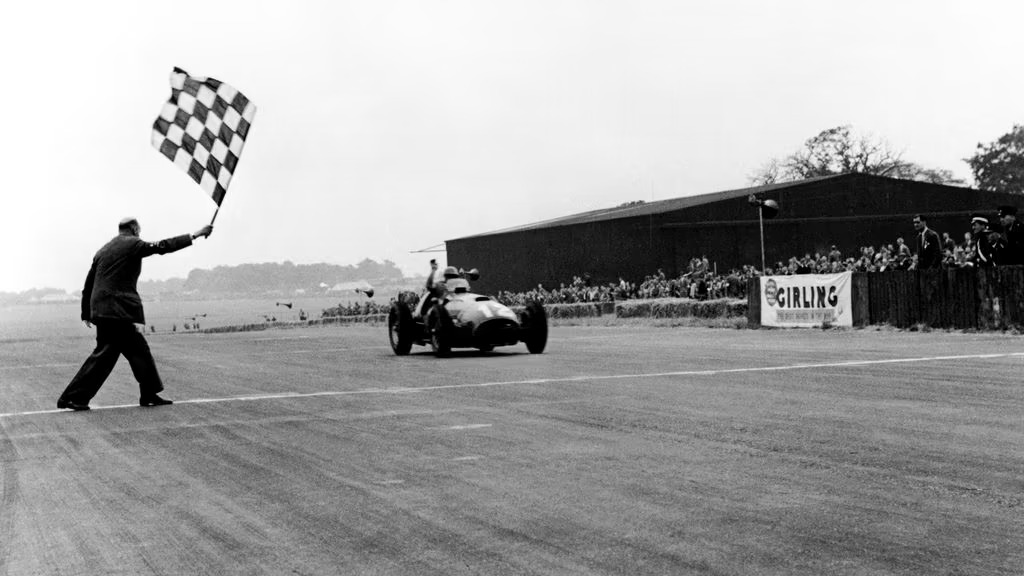
As wide of girth as he was big in stature, González is a legend in Ferrari lore – and with good reason. Despite his bulk, he was quite the sportsman in his youth. And, as with compatriot Fangio, he shone in the arduous South American road races before following his friend to Europe. Dubbed ‘The Pampas Bull’ by the English-speaking media, or less kindly ‘El Cabezón’ (‘Fat Head’) at home, he became a Ferrari driver in 1951 but was very much the understudy; he was lying second in the French GP when he was obliged to give his car to Alberto Ascari.
At the British Grand Prix, he was locked in a duel for the lead with Fangio, although it soon became obvious that the latter’s Alfa was wilting. González didn’t pit until two-thirds distance, and was fully expecting to hand over his car to Ascari, whose own had a broken gearbox. Instead, he was waved away and scored the Scuderia’s first World Championship win. He triumphed again at Silverstone in 1954, the same year that he claimed Le Mans honours alongside Maurice Trintignant.
5. Phil Hill
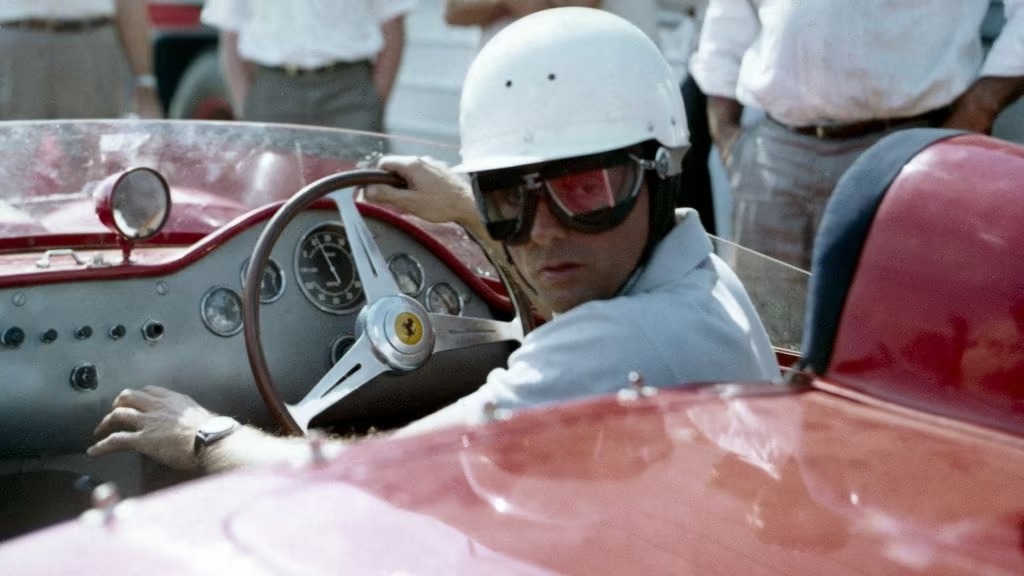
Rarely has a Formula 1 World Champion been so poorly served by history. Phil Hill is among the least celebrated of this rarest of species, and even now he is often talked of as being more of a sports car specialist than a single-seater ace. Given that his CV included three wins in the Le Mans 24 Hours, as well as many in the Sebring 12 Hours, it’s an easy assumption to make. Even Enzo viewed him as being effective in this role. He didn’t seriously consider Hill a GP driver until he ultimately relented because, well, needs must.
Hill was a Works F1 pilot from the tail end of the 1958 season to 1962. He won three World Championship Grand Prix victories, his 1961 title in the 156 ‘Sharknose’ being assured in the worst way possible after his team-mate and rival Wolfgang von Trips was killed at Monza. Sadly, the famous ‘Palace Coup’ saw the Ferrari brains trust sacked thereafter. As such, 1962 proved a washout, at least in F1 – Hill’s subsequent move to ATS proving an unmitigated disaster.
4. Michael Schumacher
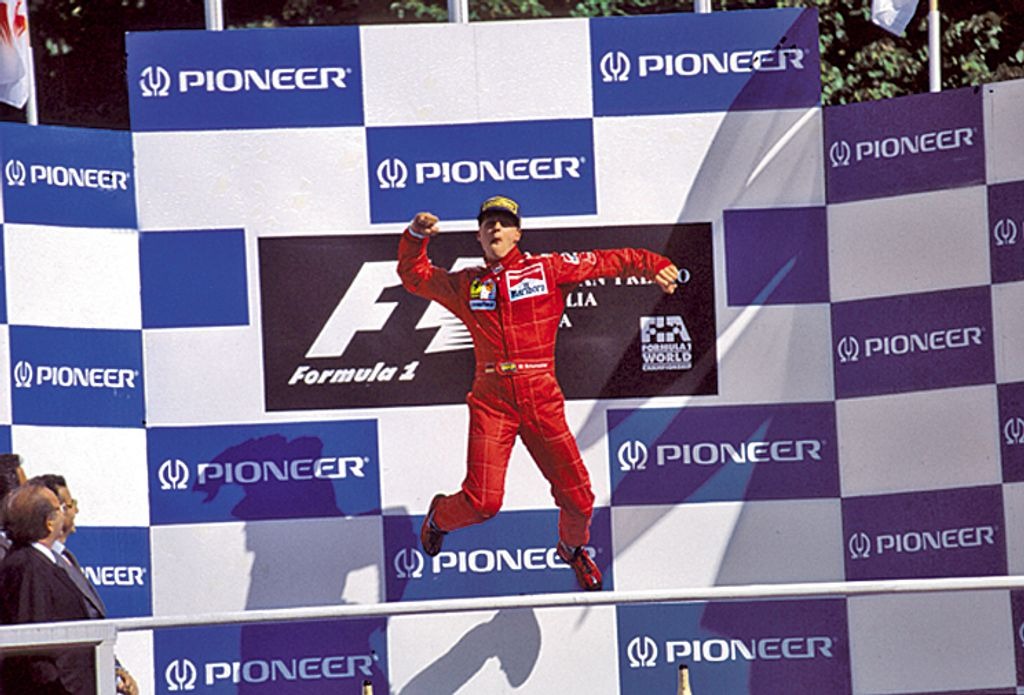
The statistics beggar belief: Schumacher claimed 72 Grand Prix wins for Ferrari from 179 starts between 1996 and 2016. He also bagged five drivers’ titles to go with the two previously racked up at Benetton. The German moulded the Scuderia in his own image, securing the services of Rory Byrne and Ross Brawn. Having them in his corner, and with Jean Todt running the show, the trickle of wins accrued with the lacklustre F310 in 1996 became a flood. A year later, Schuey only narrowly missed out on the drivers’ title after he chose to drive into Williams’ Jacques Villeneuve during the Jerez decider.
Moving forward in the narrative, Schumacher claimed the first of his consecutive titles in 2000. He made the most of his superior machinery (and tyres), but also had the advantage of subservient team-mates. That, and self-belief that often strayed into delinquency. And therein lies the rub. So much of the Ferrari mythology is based upon romanticism, and for all his undoubted genius, there was nothing romantic about the way Schumacher raced.
3. Alberto Ascari
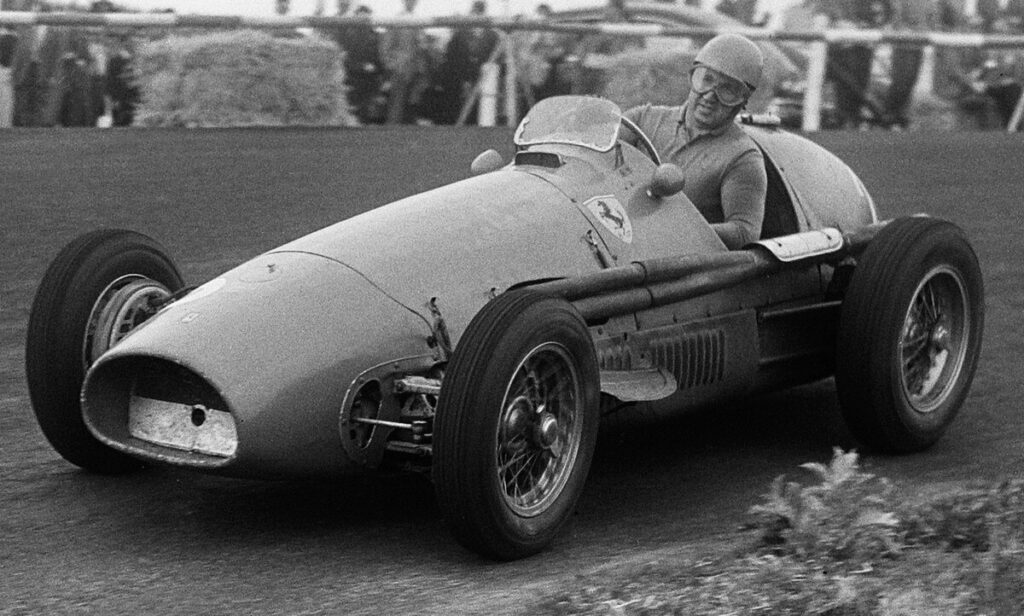
To some extent, this remarkable driver’s life and career was overshadowed by that of his father, Antonio. Ascari Sr was a stand-out driver in the 1920s; an Alfa Works man who was killed at Montlhéry in 1925. Alberto raced a Ferrari in all but name – the Auto Avio Tipo 815 – in the 1940 Mille Miglia. He led his class until his mount waned. The relationship with Enzo would blossom later, and only after Ascari had enjoyed a dalliance with Maserati.
He joined the Scuderia during 1949, winning the Swiss GP at Bremgarten, the International Trophy at Silverstone and the Italian GP at Monza. However, Alfa returned to the GP arena for 1950, the inaugural year of the World Championship, and the supercharged 158 was in a class of one. Alfa maintained its dominance until Ferrari’s José Froilán González broke its stranglehold at Silverstone in July 1951. Nevertheless, it was Ascari who followed through, winning the German and Italian GPs. With Alfa’s subsequent withdrawal, it soon became apparent that there would be no serious threat to Ferrari going into 1952, the year the World Championship switched to Formula 2 regulations.
Ascari dominated. He would have won every round had he not decided to skip the Swiss GP to prepare for an Indy 500 bid. He continued from where he left off in ’53. His victory in the Swiss GP was his last, though, if only at World Championship level. A move to Lancia the next year was hampered by the lack of a race-ready car. He retired from the first two rounds of the 1955 season, but had taken the lead at Monaco from Stirling Moss when his brakes locked up and his car plunged into the drink.
He bobbed to the surface, only to perish in an accident at Monza four days later. He went along to see Eugenio Castellotti test a Works Ferrari, and decided on the spur of the moment to also take to the wheel. His smash at Curva Vialone remains unexplained. He was just 36, the same age as his father when he died.
2. Niki Lauda
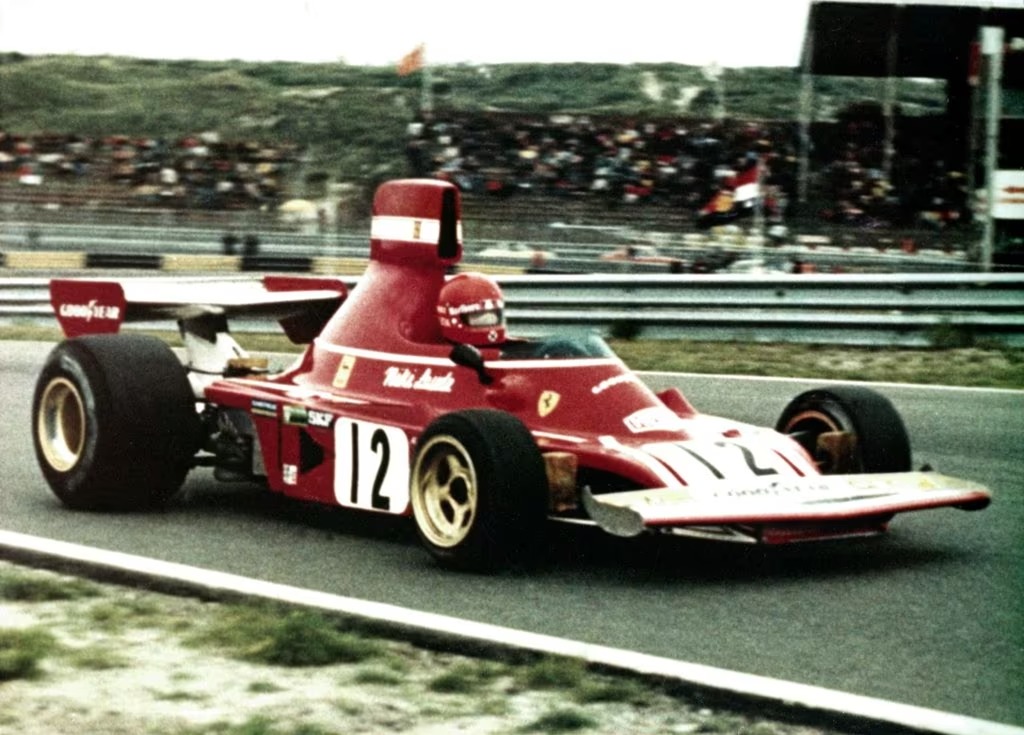
For all his many achievements, the Austrian is primarily remembered for his strength of character following that fiery accident during the 1976 German Grand Prix at the Nürburgring. The reigning title-holder was on course to seal repeat honours with Scuderia Ferrari, only for the shunt to almost claim his life.
He suffered third-degree burns to his head and face. His lungs were also seared, which led to him receiving last rites. Few thought he would ever leave hospital – fewer still that he would ever race again – yet he returned to competition barely 40 days later. He finished fourth in the 1976 Italian GP while in excruciating pain.
Lauda had overcome family objections to become a racing driver. A ‘pay driver’ with March and BRM in 1972-73, he nevertheless attracted the attention of Ferrari, thanks in no small part to Clay Regazzoni putting in a good word. Lauda won three rounds in 1974, before taking his first title a year later. In 1977 he claimed his second crown before moving to Brabham, which was then employing Alfa Romeo engines.
He retired partway through the 1979 season to establish Lauda Air, only to be tempted back by McLaren after two years away. He won his third title in 1984, and retired again a year later, his legendary status already assured.
Ironically, for a man who hated gushy sentimentalism, ‘The Rat’ is so high up our list because he was the living embodiment of the right stuff. He was a racer to the core, and one who symbolised triumph and tragedy, the yin and yang of the Ferrari narrative. His battle with McLaren’s James Hunt during the 1976 season is the stuff of legend – a story that was further burnished by the Hollywood-ised version in Rush.
Truth is, the film wasn’t lacking in bovine excrement – not least the central tenet that there was enmity between Lauda and Hunt – but the gist was clear; Lauda made Scuderia Ferrari his own, and he did so by sheer force of will.
1. Gilles Villeneuve
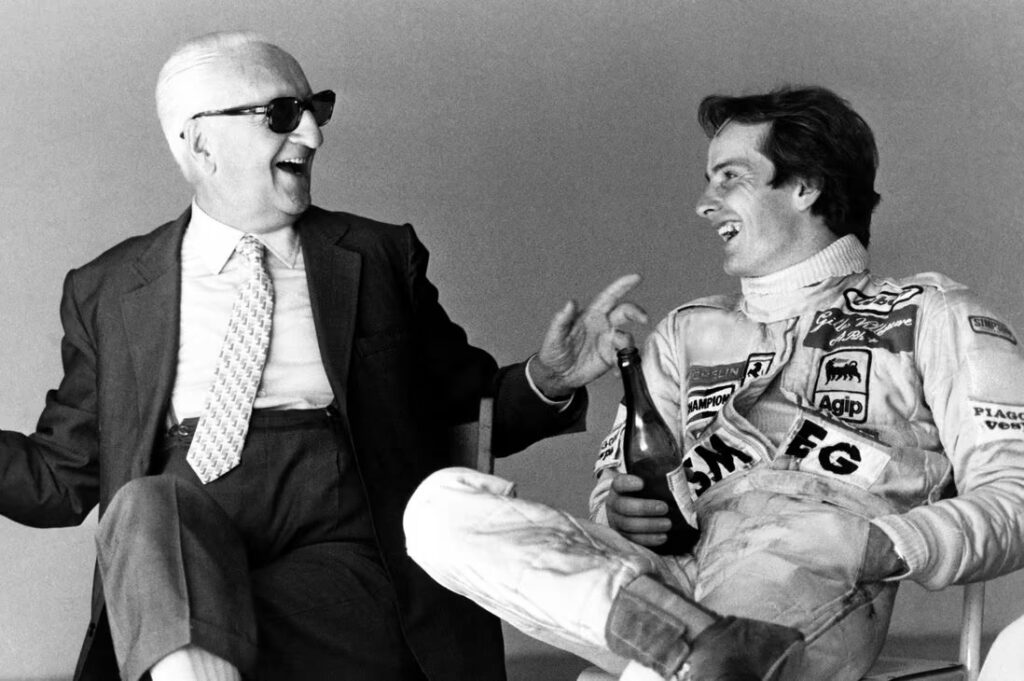
He was always going to be up here. Statistically, Villeneuve wasn’t the greatest driver ever to sit in a Ferrari Grand Prix car. Nevertheless, this French-Canadian’s name is intertwined with that of Ferrari’s like no other. Villeneuve was a latter-day Tazio Nuvolari, a man who made the impossible possible. He was the Earl of Oversteer, who could teeter a car on a knife-edge between control and the other thing. He was the guileless legend in his own lifetime who was every bit as expressive as the Tifosi who adored him.
And, as with Ferrari, myth and reality tended to overlap. Niki Lauda once labelled the former snowmobile racer “…the craziest devil I ever came across in Formula 1”. The great engineer/designer Mauro Forghieri described him as having “a rage to win” like no other driver that he ever worked with. Even Enzo Ferrari, who was atypically simpatico with his young charge, labelled him “…the high priest of destruction”.
Conversely, there are others who insist that once you scrape away the popular belief that he was the thinking man’s lunatic, and analyse the full picture, he was anything but a madman. He was more (prancing) horse whisperer than bronco buster.
Villeneuve tried drag racing before moving into Formula Ford, and graduated to Formula Atlantic. He starred nationally, too, but perhaps wouldn’t have appeared on the world stage were it not for James Hunt. In 1976, the superstar Brit was paid a lot of money to contest the grandiosely titled Grand Prix de Trois-Rivières, as were fellow F1 drivers Alan Jones and Vittorio Brambilla. If the ‘imports’ expected an easy ride against the locals, they were in for a rude awakening. The race for Atlantic cars was won at a canter by Villeneuve.
Hunt returned home raving about the guy who made him look ordinary. So much so, the people at McLaren took a punt, but decided after one memorable test and a lone Grand Prix that Villeneuve wasn’t for them. They couldn’t afford the likely repair bills. Ferrari was more receptive, and Villeneuve contested the final two rounds of 1977 prior to his first full season. And yes, there were crashes throughout 1978, but he claimed his first GP win in Canada before the year was out. He did so by adopting a compound of tyre so soft that its supplier said they’d never last.
Each of Villeneuve’s six wins belied his reputation as a wild man; witness his victory at Jarama in 1981, when he was pursued by a train of faster cars for virtually the entire distance, just two seconds blanketing the top five as the flag descended. There weren’t even trace elements of a mistake from start to finish. But it wasn’t just the wins that made Villeneuve a man apart. There was him setting fastest time in practice at a sodden Watkins Glen in 1979 by 8.5sec; there was the 1980 Monaco Grand Prix, where he was 5sec faster than anyone following in a late downpour – and that was in the execrable 312 T5, a car that was more asthmatic pit pony than thoroughbred. And so on.
Villeneuve’s life was extinguished during final qualifying at Zolder in May 1982. His loss was a tragedy – another being the fact that he raced second-rate cars for much of his time in F1. Rarely, if ever, has a driver done more with less. The last word must go to his former team-mate Jody Scheckter. He said at Villeneuve’s memorial service: “I will miss Gilles for two reasons. First, he was the most genuine man I have ever known. Second, he was the fastest driver in the history of motor racing.”
To find out the rest of our Top 50 Ferrari drivers, see Magneto issue 16 here.
